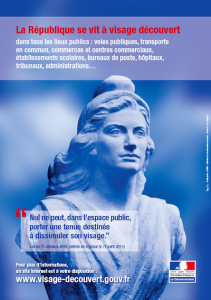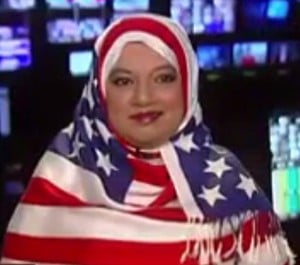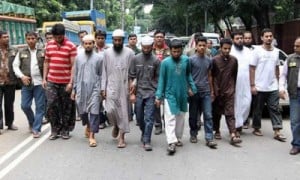A year ago this week, a French law came into effect banning face veils for women. At the time, the law was subject to much derision for “only” affecting the very specific number of 367 niqab and burqa-clad women (as of 2009) in France, although at its time, the law was thought to concern a couple thousand women.
Anything relating to Muslims has long been a political tool in France, be it from the far-right National Front (FN) party, or from President Sarkozy’s Union for a Popular Movement (UMP) party, whose government passed the law. Admittedly, to bring a little of the “fair and balanced,” the first headscarf affairs did take place during the Mitterand (Socialist) administration. Given that preying on anti-Muslim sentiments and adopting parts of the National Front’s platform (much like the Republicans court the Tea Party) seem to be two of the UMP’s hobbies in an election season, I was curious to see how the one-year mark would be “celebrated” in the unique context of France’s upcoming presidential elections, where Sarkozy is not assured re-election, and where the country is just coming off the tragedy of the Merah shootings.

This year, the numbers of women donning the face veil are a bit less specific but still, the math doesn’t add up, depending on who you talk to. For example, let’s use the 2009 data, 367 niqabis, as our working number. According to AFP, cited in Libération, there were 354 checks (where women were stopped)and 299 citations (where information was taken with the possibility of pressing charges) for women in face veils. If you go by the 2009 numbers, this means that only 13 women are left in France that haven’t been found by the niqab police. However, the rough estimate at the time the law was passed of 2000 women also seems a bit extreme, and even the Interior minister Claude Guéant himself said that one year of the law has seen “the number of women in face veils cut in half.” So if only 300 or so were checked, does that mean there were only 600 before?
So who knows how many women wear niqab in France? All I know is that it’s not enough to make it a matter of national public policy. But since French politicians love to tell women what to wear, what is scary is the context of the ban one year on and the nefarious turn French laïcité has taken. As if a niqab ban wasn’t enough (especially if the numbers are anything to go by), or that the authorities realized that they weren’t reaching a significant amount of the populace, this January the French Senate legislated on the “religious neutrality” of nursery workers. Note that in France, only two professions are left to women who want to keep their headscarves on: cleaning lady and nursery worker. For the most part, these nursery workers either work in their own homes or in private nurseries. Now, because French secularism must be present in all portions of society, women who want to be authorized to work as nursery workers must not wear veils when they are working, even in their own homes (I’ll just skim over the fact that hijabis don’t usually wear headscarves at home unless they have visitors).
I’m waiting for the cleaning lady law, keeping in mind that cleaning ladies in government buildings already can’t wear their headscarves. Like the nursery workers in private homes who are supposed to take their veils off, maybe a Muslim woman vacuuming in her own home would then be in some sort of legal no-man’s land, where she could get questioned for police for not taking her hijab off to vacuum. Interesting jurisprudence!
The sad part of all this is that the niqab ban anniversary only got a fair amount of media coverage, and the “nursery uniform” “religious neutrality” law even less. What’s worse, the initiator of the “religious neutrality” law was someone from the Parti radical de gauche (Left Radical Party), and strangely not from the ruling UMP like some of the other texts. For me, this means that legislating on Muslims and their clothing have become commonplace and banal in France, as if they are the only ones in the entire country who have failed to understand the specifities of French secularism (or, that these are anti-Muslim laws cloaked under the veil of laïcité). During this election, out of the ten presidential candidates, both the right and the left profited from the Merah shootings to cash in on Islamophobia in French society. For none of this is happening in a vacuum-as stated above, the Sarkozy administration has repeatedly used Islam and Muslims as its punching bag, be it with questions of “security” or “secularism.” Out of the ten presidential candidates, only two were willing to go against the tide and denounce the fear-mongering by the major parties: Eva Joly, the ecologist candidate, in one of her official campaign spots; and François Bayrou, a centrist candidate, who, during a television debate, was forced to defend comments he made in Grenoble (before Mohamed Merah’s identity was made clear) regarding Sarkozy’s divisive politics when it came to Islam and Muslims. Unfortunately, neither of these candidates appear to be in an electable position at this time.
Either way you cut the numbers and whatever side of the political divide you stand on, it can be agreed that in a time of economic crisis, the niqab ban has caused an awfully large amount of public money and resources to be wasted for a very small number of women in a population of around 60 million. But while the money is wasted, the political gains are huge. With Sarkozy struggling in the polls and Marine le Pen laughing all the way to the bank, Islamophobia is fair game. Welcome to French secularism!













